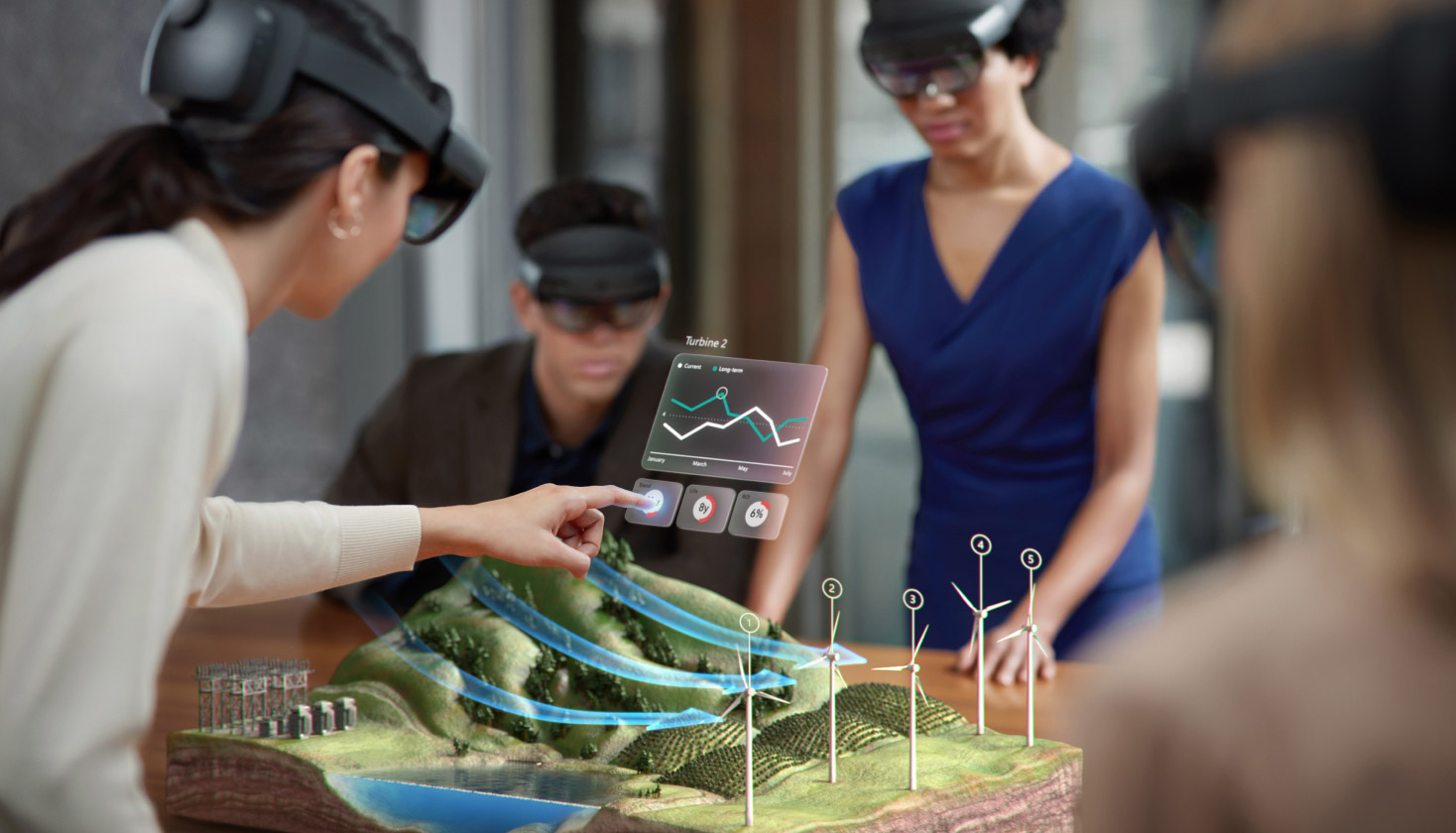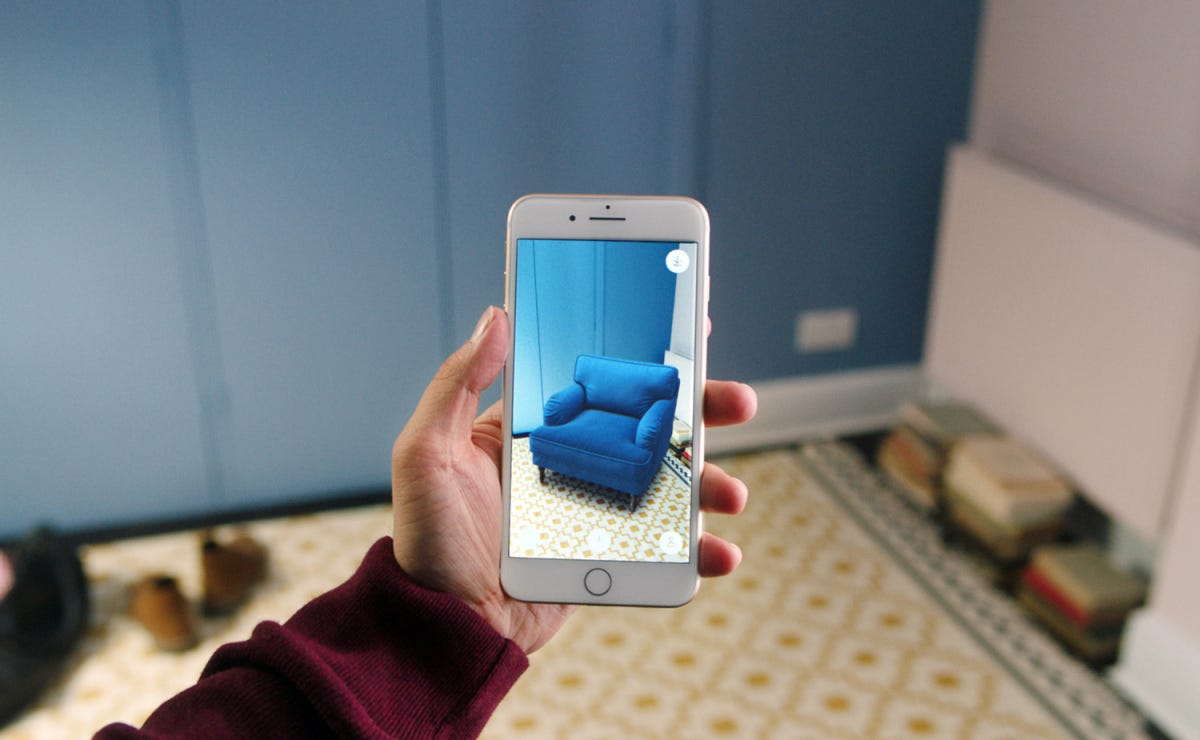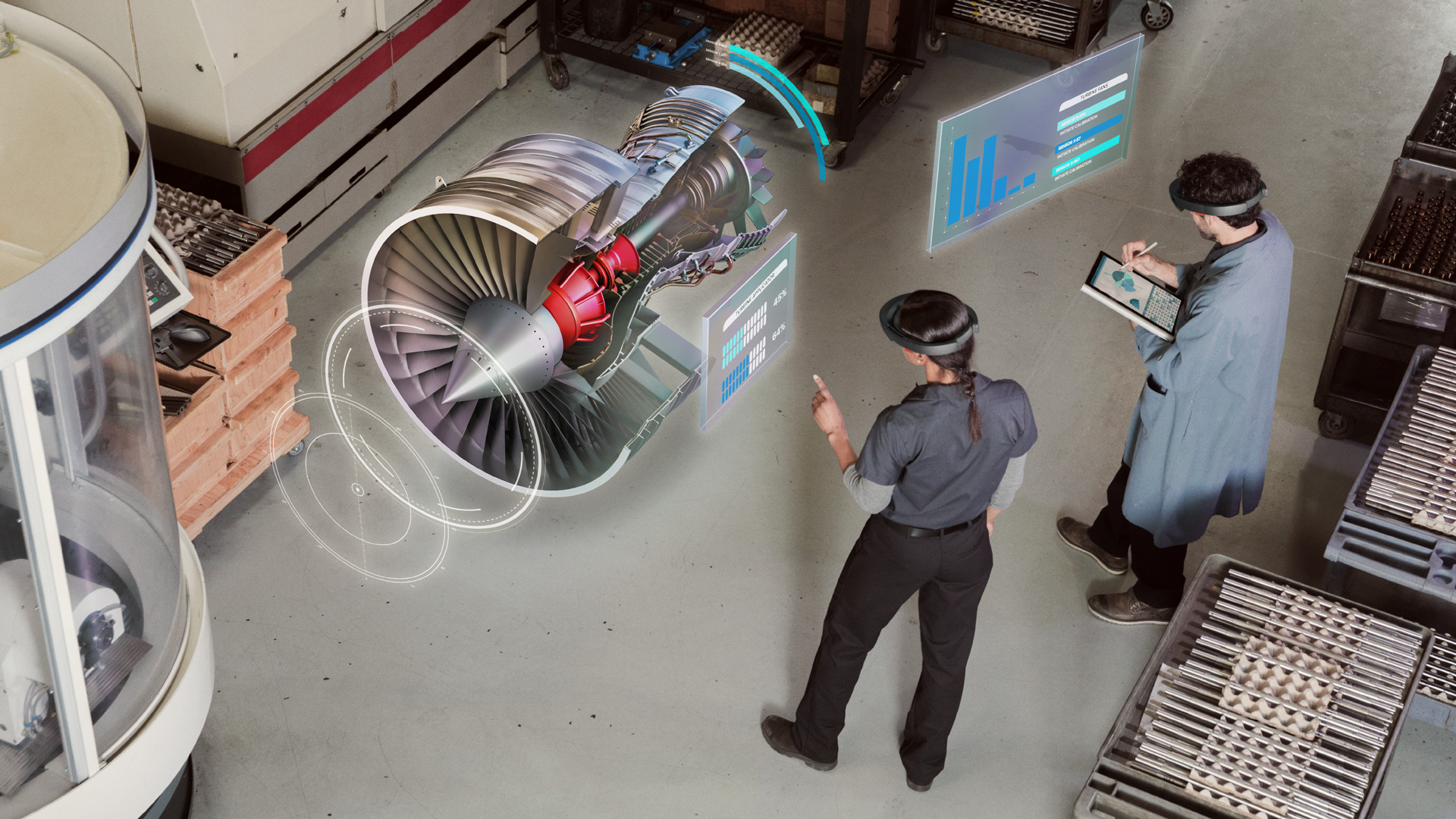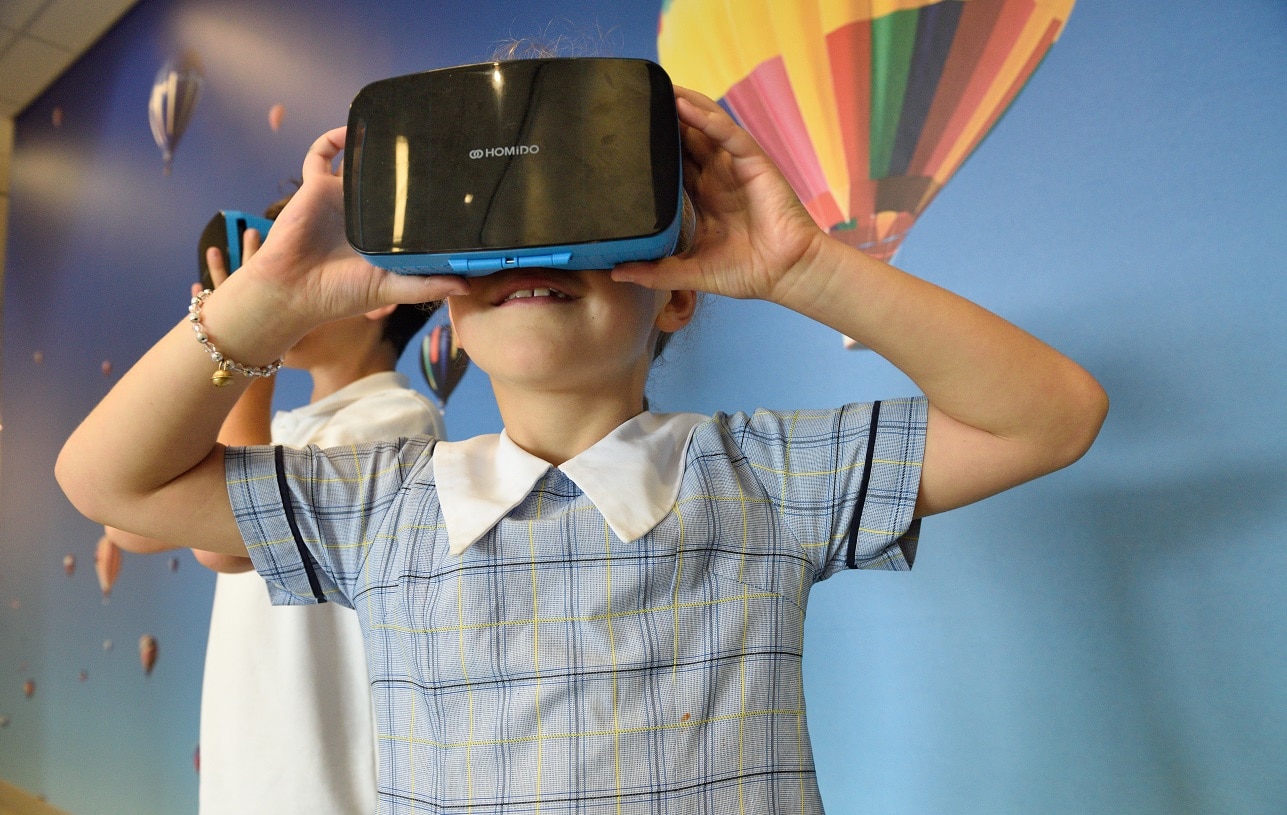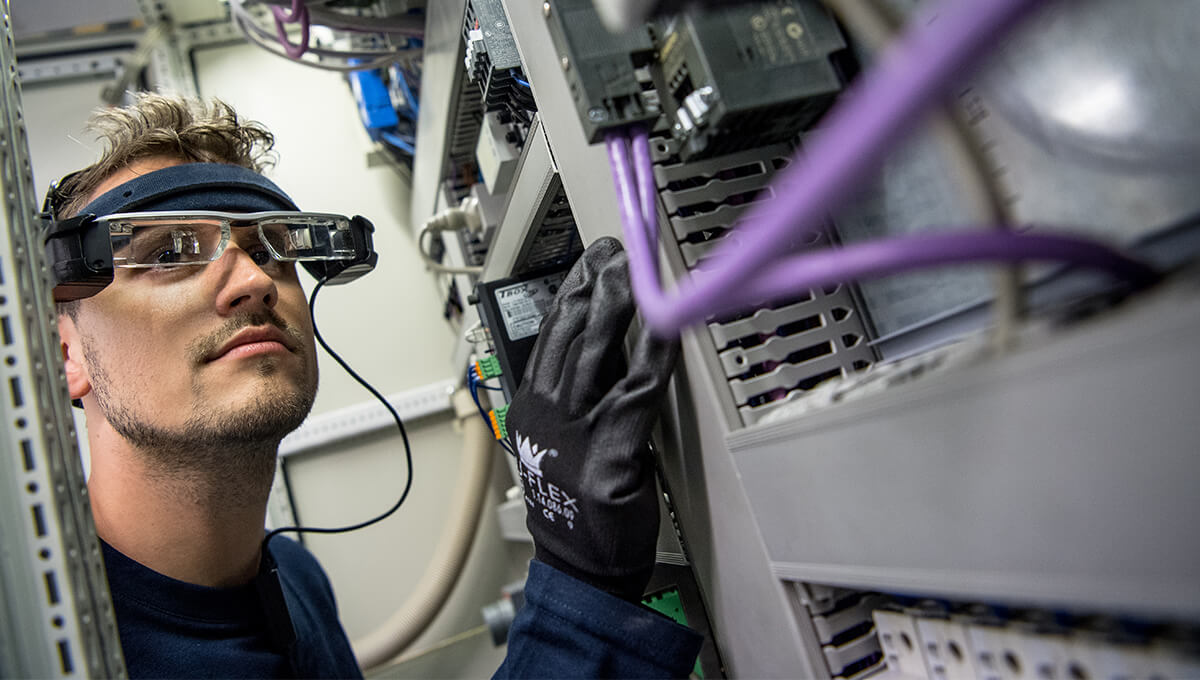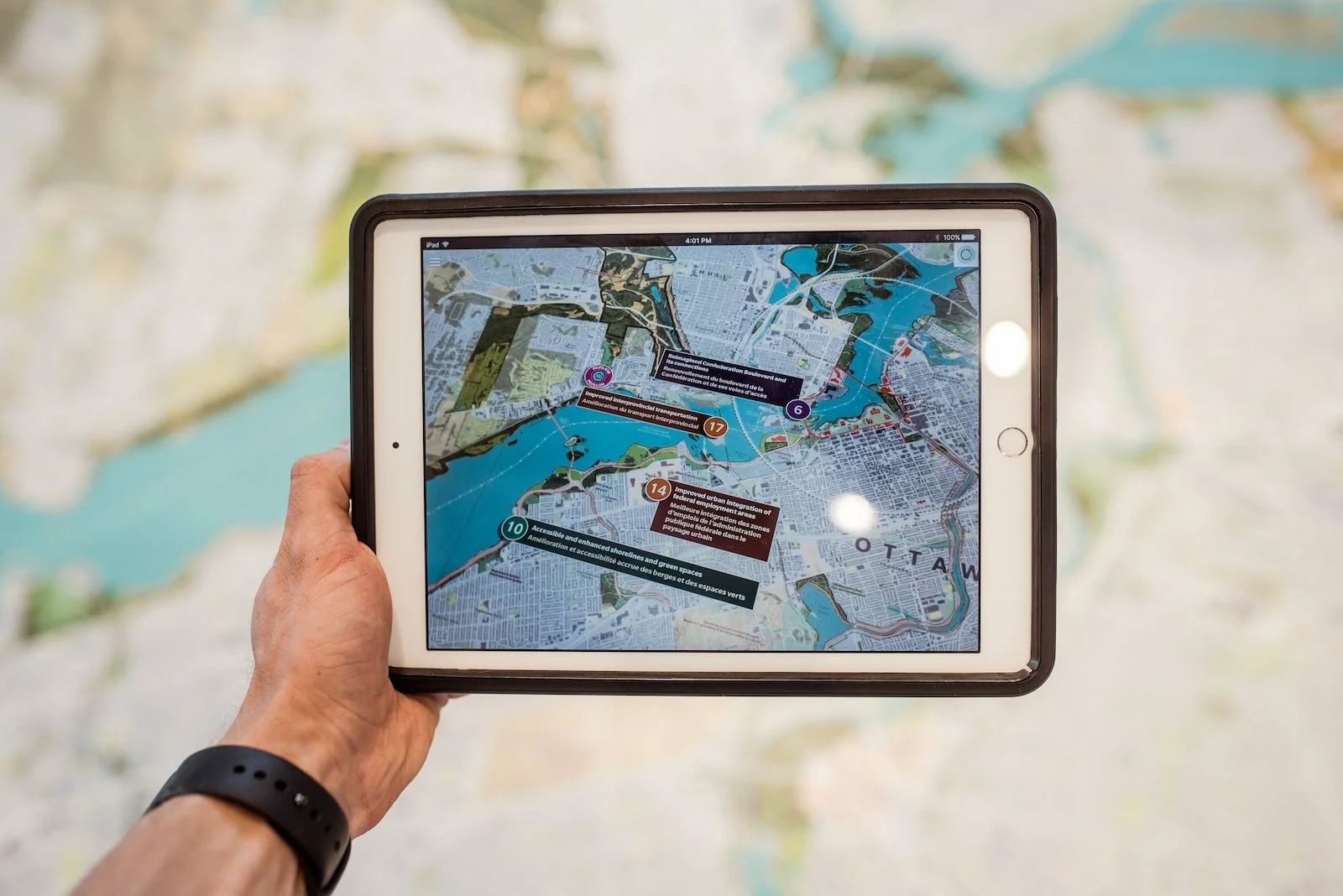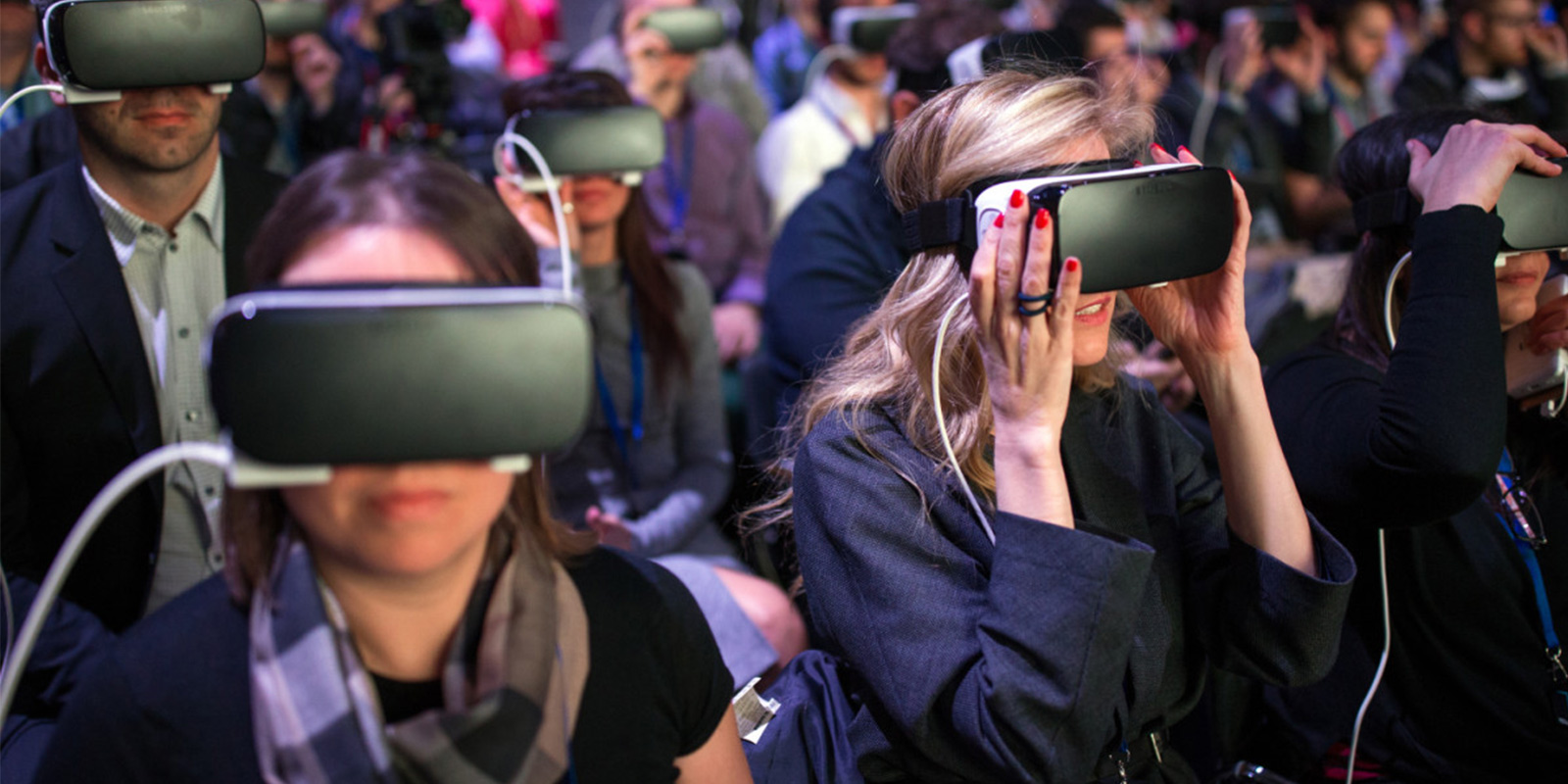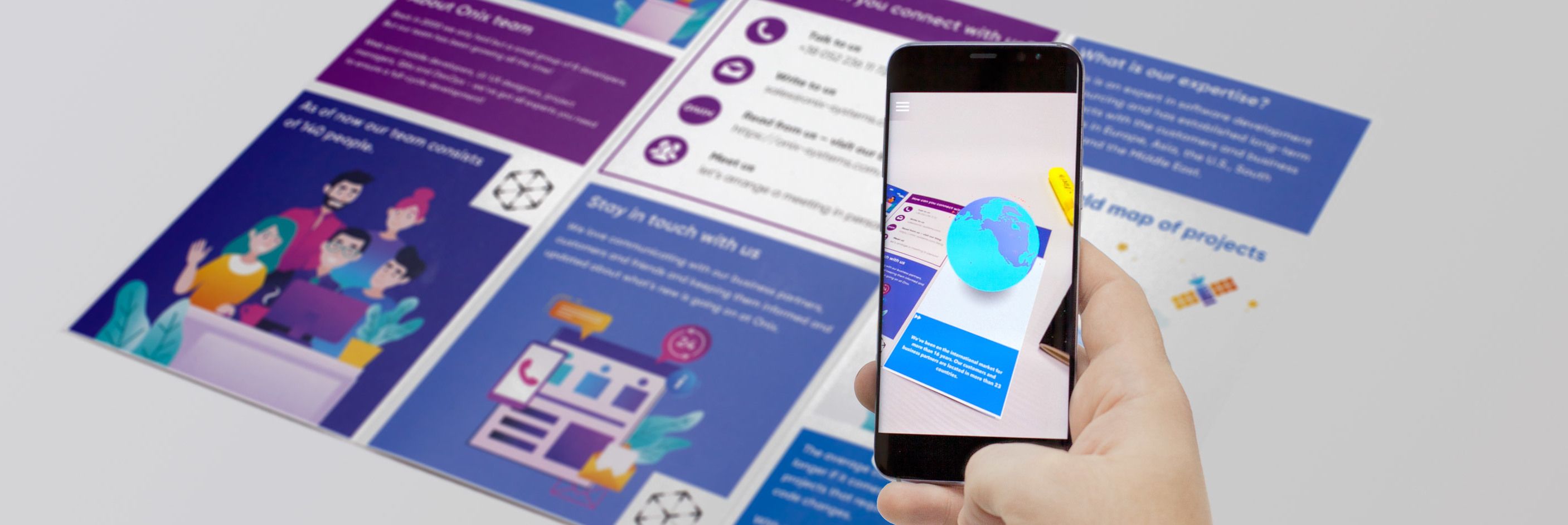Introduction
Augmented reality (AR) has revolutionized the way we interact with the world around us. This exciting technology overlays digital information onto our physical surroundings, seamlessly merging the virtual and real worlds. With the rapid advancements in AR technology, it has become increasingly accessible to a wide range of users, transforming various industries and aspects of our daily lives.
AR experiences are not limited to a single platform or device—instead, they can be accessed through a variety of mediums, including smartphones, tablets, smart glasses, and even specialized headsets. This availability allows users to experience AR in different environments and contexts, enhancing their interactions in innovative ways.
Whether you are at home, in public spaces, or at work, there are numerous opportunities to engage with augmented reality. From entertainment and gaming to education and healthcare, AR has applications across various domains. In this article, we will explore the diverse arenas in which you can interact with augmented reality.
So, fasten your seatbelt and get ready to embark on a thrilling journey through the world of augmented reality. Let’s discover where and how this immersive technology is reshaping our experiences and redefining what is possible!
In the Comfort of Your Home
Augmented reality brings a whole new level of entertainment and convenience to the comfort of your own home. With AR-enabled devices like smartphones and tablets, you can transform your living room into a virtual playground or create an immersive movie-watching experience.
Gaming is one of the primary areas where AR has found a home in domestic settings. Through AR-enabled games, you can engage in interactive experiences that blend the virtual and real world. Imagine battling virtual creatures in your own backyard or solving puzzles that come to life on your coffee table.
AR also enhances home shopping experiences. By using furniture and home decor AR apps, you can visualize how specific items will look in your living space before making a purchase. This allows you to make more informed decisions and avoid buyer’s remorse.
Moreover, AR can assist in home maintenance and improvement. By using AR applications, you can get step-by-step visual instructions on how to assemble furniture, repair appliances, or even renovate your house. This technology can significantly simplify complex tasks and empower you to be a DIY expert.
Additionally, AR has made its way into the culinary world. With AR cooking apps, you can access interactive recipes, view ingredient information, and get real-time guidance on cooking techniques. It’s like having a virtual chef in your kitchen, guiding you through every step of the cooking process.
By bringing AR into your home, you can transform ordinary activities into extraordinary experiences. Whether you’re gaming, shopping, maintaining your space, or cooking up a storm, augmented reality adds an element of excitement and innovation to your domestic environment.
In Public Spaces
Augmented reality has become increasingly prevalent in public spaces, enriching various aspects of our daily lives. From city streets to parks and museums, AR has the power to transform our surroundings into interactive and educational experiences.
One popular application of AR in public spaces is the use of mobile apps for city navigation. These apps overlay navigation instructions onto the real world, guiding you to your destination with ease. You can simply follow virtual arrows on your device’s screen, eliminating the need to constantly refer to a map or GPS instructions.
Public art installations have also embraced augmented reality. By using AR apps, you can witness traditional artwork come to life or explore interactive digital art experiences. This dynamic fusion of technology and creativity adds a new dimension to our appreciation of art and allows for a deeper connection with the artist’s vision.
Furthermore, AR is being utilized for informative and interactive guided tours of historical landmarks and tourist attractions. Instead of relying on plaques or audio guides, AR-enhanced tours provide a more engaging and immersive experience. You can explore ancient ruins, historical sites, or famous landmarks while learning about their significance through captivating digital overlays.
In shopping malls and retail stores, AR is changing the way we shop. Through dedicated apps, you can virtually try on clothes, visualize furniture in your home, or even test makeup products before making a purchase. This technology enhances the shopping experience by allowing you to make more informed decisions and save time.
Moreover, AR is making its mark in the advertising industry. Augmented reality billboards and interactive displays engage passersby by overlaying digital images or animations onto physical spaces. This dynamic form of advertising captures attention and delivers compelling messages in a unique and memorable way.
Whether it’s navigating the city, appreciating art, exploring historical sites, shopping, or encountering interactive advertisements, augmented reality in public spaces enhances our daily experiences and opens up a world of possibilities.
In Retail Stores
The retail industry has embraced augmented reality as a powerful tool to enhance the shopping experience for customers. AR technology is revolutionizing how we browse, try on, and purchase products, both in physical stores and online platforms.
One of the most popular applications of AR in retail is virtual fitting rooms. With AR-enabled apps, you can “try on” clothes virtually and see how they look on you without physically trying them on. This not only saves time but also allows you to experiment with different styles and sizes, significantly improving the online shopping experience.
AR is also utilized for virtual product demonstrations. With AR-enabled apps, you can scan products in-store and access detailed information, such as specifications, reviews, and usage tutorials. Imagine being able to see how a piece of furniture would look in your home or how a new gadget works before making a purchase.
In addition, AR enhances product packaging and labeling. By scanning a product’s label, customers can access immersive content, such as 3D models, videos, or interactive instructions. This provides additional product information and enhances engagement, creating a more memorable and informative shopping experience.
Furthermore, AR-powered wayfinding systems are being implemented in large retail stores and shopping malls. These systems guide customers to specific products, departments, or even offer personalized recommendations based on their preferences. Augmented reality navigation simplifies the shopping process, allowing customers to find what they need more efficiently.
AR is also transforming the concept of pop-up stores and temporary retail installations. Brands can create unique and memorable experiences by implementing AR features such as virtual try-ons, interactive displays, or gamified elements. This not only attracts customers but also elicits a sense of novelty and exclusivity.
With the integration of augmented reality, retail stores are able to provide a personalized, interactive, and immersive shopping experience. AR technology elevates customer engagement, improves decision-making, and ultimately contributes to a more satisfying and enjoyable retail experience.
In Theme Parks and Attractions
Theme parks and attractions have become a playground for augmented reality, offering visitors unforgettable experiences that blend the real and virtual worlds. AR technology is revolutionizing how we engage with rides, shows, and interactive exhibits, taking entertainment to new heights.
One of the most exciting applications of AR in theme parks is augmented reality rides and attractions. Through specialized headsets or interactive devices, visitors can embark on immersive adventures that transport them to fantastical worlds. This technology overlays virtual elements onto the physical environment, creating a truly captivating and interactive experience.
AR is also utilized in interactive shows and performances. By wearing AR glasses or using mobile apps, visitors can witness amazing visual effects, holographic characters, and stunning 3D animations that blend seamlessly with the live performances. This fusion of technology and entertainment creates a one-of-a-kind experience that leaves audiences in awe.
Moreover, augmented reality scavenger hunts and interactive exhibits are gaining popularity in theme parks. Visitors can use AR-enabled devices to explore the park and discover hidden treasures, solve puzzles, or interact with virtual characters. This gamification of the park experience adds an extra layer of excitement and engagement for visitors of all ages.
AR is transforming traditional theme park maps into interactive guides. Visitors can use AR-enabled apps to navigate the park, locate attractions, view wait times, and access additional information about rides and shows. This technology simplifies the planning process and helps visitors make the most of their time in the park.
Furthermore, augmented reality photo booths offer a unique way to capture and share memories. These booths employ AR filters, effects, and virtual backgrounds to enhance photos and create memorable souvenirs. Visitors can take fun and interactive pictures with their favorite characters or in breathtaking virtual environments.
With augmented reality, theme parks and attractions are raising the bar for immersive entertainment. AR technology creates unforgettable experiences that transport visitors to new worlds, engage their senses, and leave them with lasting memories of adventure and excitement.
In Museums and Art Galleries
Museums and art galleries are embracing augmented reality as a means to enhance and transform the way we experience art and historical artifacts. With AR technology, visitors can engage with exhibits in interactive and informative ways, breathing new life into traditional museum settings.
One of the most notable applications of AR in museums and art galleries is the ability to augment static artworks with additional information. By using dedicated AR apps, visitors can scan paintings, sculptures, or artifacts to access immersive content such as historical facts, artist biographies, and even audio or video guides. This contextual information enhances the understanding and appreciation of the artwork, providing a deeper connection with the artist and their creation.
AR also enables the recreation of historical or ancient scenes within museums. Through AR projections or holograms, visitors can step back in time and witness key moments in history or explore ancient civilizations. This technology brings history to life, making it more accessible and engaging for all visitors.
In addition, AR-powered art installations are becoming increasingly popular in galleries. These installations combine physical artwork with virtual elements, creating interactive and visually stunning experiences. Visitors can engage with the art by using AR-enabled devices, triggering animations, sound, or other interactive features that complement the physical exhibits.
Moreover, AR technology allows for the creation of virtual exhibitions, expanding the museum experience beyond the physical space. Visitors can access virtual galleries through their devices or specialized headsets, enjoying curated collections, immersive storytelling, and interactive experiences from the comfort of their homes. This opens up opportunities for greater accessibility and global reach.
AR is also utilized in museum and gallery tours, replacing traditional audio guides with interactive experiences. Visitors can use AR-enabled apps or devices to navigate the museum, receive informative commentary, and access multimedia content related to the exhibits. This technology enriches the tour experience and empowers visitors to explore at their own pace.
With augmented reality, museums and art galleries are reinventing the way we engage with art, history, and culture. AR technology brings interactive elements, contextual information, and immersive experiences to traditional spaces, fostering a deeper understanding and appreciation for the exhibits. Augmented reality is enriching the museum experience and making art and history more accessible and engaging for all.
In Sports and Entertainment
Augmented reality has made a significant impact on the world of sports and entertainment, enhancing the way we watch, engage with, and participate in these activities. From live events to interactive gaming, AR technology brings a new level of excitement and immersion to the sports and entertainment industries.
One of the most popular applications of AR in sports is enhancing the viewing experience for fans. By using AR overlays and graphics, viewers can access real-time statistics, player information, and instant replays during live broadcasts. This provides a deeper understanding of the game and adds a new layer of engagement for fans.
AR is also used to bring sports stars into fans’ living rooms through virtual meet-and-greets or holographic representations. Fans can use AR-enabled apps or devices to interact with their favorite athletes, take selfies, or engage in virtual autograph sessions. This creates a sense of connection and excitement that transcends traditional fan experiences.
Moreover, AR is transforming the way we experience live events. With specialized AR glasses or mobile apps, event attendees can access additional content, such as behind-the-scenes footage, interactive maps, and real-time information about performers or sports teams. This technology enhances the overall event experience, providing a more immersive and memorable time for attendees.
In the world of gaming, AR has brought a new dimension to mobile gaming experiences. With the advent of AR-enabled games, players can interact with virtual characters, creatures, and objects within their own surroundings. This creates an immersive and interactive gaming experience that bridges the gap between the virtual and physical worlds.
AR is also utilized in virtual reality (VR) gaming, where players can create their own avatars and environments. Through AR integration, players can interact with digital objects and characters in a more realistic and immersive way. This technology pushes the boundaries of gaming and offers unparalleled experiences for enthusiasts.
Furthermore, AR is revolutionizing live performances and concerts by adding virtual elements to stage shows. From holographic displays to interactive visuals, AR technology enhances the visual spectacle and creates truly immersive experiences for audiences. This fusion of technology and entertainment takes performances to new heights, blurring the line between reality and imagination.
With augmented reality, sports and entertainment industries are pushing the boundaries of what is possible. AR technology enhances the viewing experience, brings fans closer to their favorite athletes, creates immersive gaming experiences, and transforms live events into multimedia spectacles. Augmented reality is revolutionizing the way we enjoy and participate in sports and entertainment.
In the Workplace
Augmented reality is reshaping the modern workplace, revolutionizing how we collaborate, learn, and perform various tasks. With AR technology, employees can access information, receive real-time guidance, and interact with virtual elements in their work environment.
AR is transforming employee training by providing immersive and interactive experiences. By using AR-enabled devices, employees can simulate real-life scenarios and receive hands-on training in a safe and controlled environment. This technology reduces the need for costly and time-consuming physical training sessions, while ensuring employees are equipped with the necessary skills and knowledge.
Moreover, AR enhances remote collaboration and communication in the workplace. By using AR-enabled video conferencing tools, employees can virtually collaborate with colleagues located in different geographic locations. This technology allows for the overlay of visual cues, presentations, and shared documents, fostering more engaging and effective remote meetings.
In fields such as architecture and engineering, AR is used to visualize and manipulate designs in real-time. With AR-enabled software, professionals can overlay 3D models onto physical spaces, enabling them to make design adjustments and visualize the final product before construction begins. This not only streamlines the design process but also enhances communication with clients and stakeholders.
AR is also utilized in industries that involve complex assembly or repair processes. By using AR-enabled devices, technicians can access guided instructions that are superimposed onto the actual equipment or machinery. This technology increases efficiency, reduces errors, and minimizes downtime by providing real-time, step-by-step guidance.
Furthermore, AR technology is revolutionizing remote support and troubleshooting. Employees can use AR-enabled devices to connect with technical experts who can provide guidance and annotations in real-time. This allows for faster problem-solving and reduces the need for on-site visits, saving time and costs for businesses.
AR is also transforming the way employees access and present information. By using AR glasses or devices, employees can access virtual dashboards, data visualizations, and real-time analytics. This technology provides employees with instant access to critical information, improving decision-making and workflow efficiency.
With the integration of augmented reality, the workplace is becoming more connected, collaborative, and efficient. AR technology enhances employee training, remote collaboration, design visualization, assembly and repair processes, remote support, and data accessibility. Augmented reality is reshaping the way we work and empowering employees to perform tasks more effectively and efficiently.
In Education and Training
Augmented reality has the potential to revolutionize education and training by providing immersive and interactive experiences that enhance learning and skills development. With AR technology, students and trainees can engage with content in a more dynamic and engaging manner.
One of the primary applications of AR in education is enhancing traditional classroom learning. AR can bring static textbooks to life by overlaying interactive 3D models, videos, or animations onto the pages. This interactive content makes abstract concepts more tangible and engaging, enhancing the understanding and retention of information.
AR also enables virtual field trips, allowing students to explore distant and inaccessible locations. Through AR-enabled devices, students can visit historical sites, explore the depths of the ocean, or even travel into outer space. This technology provides immersive experiences that make learning more engaging and memorable.
Moreover, AR is used in training simulations to provide realistic and hands-on experiences. Trainees can practice skills in a safe and controlled virtual environment, such as medical procedures, operating heavy machinery, or emergency response scenarios. AR simulations enhance skills acquisition, reduce risks, and provide immediate feedback for improvement.
In addition, AR technology is transforming language learning. Through AR-enabled apps, students can visualize and interact with virtual objects related to vocabulary words, practice pronunciation with virtual language tutors, or participate in immersive language conversations. This technology enhances language acquisition by creating a more immersive and practical learning experience.
AR is also utilized in chemistry and biology labs, where students can perform virtual experiments or dissect virtual specimens. This allows for more interactive and engaging hands-on learning experiences, without the need for physical materials or equipment.
Furthermore, AR enables personalized learning experiences tailored to each student’s pace and learning style. By analyzing individual progress and preferences, AR technology can deliver adaptive content and guidance, adjusting the difficulty level or providing additional support as needed. This personalized approach enhances student engagement and promotes self-directed learning.
With augmented reality, education and training are evolving into interactive and immersive experiences. AR technology enhances classroom learning, enables virtual field trips and simulations, transforms language learning, facilitates hands-on experimentation, and offers personalized learning experiences. Augmented reality has the potential to revolutionize education, making it more engaging, practical, and accessible for all learners.
In Healthcare
Augmented reality is transforming the healthcare industry, revolutionizing how medical professionals diagnose, treat, and educate patients. From surgical procedures to patient care and training, AR technology offers innovative solutions that improve outcomes and enhance the overall healthcare experience.
One of the primary applications of AR in healthcare is surgical planning and guidance. Surgeons can use AR-enabled devices to overlay 3D models onto the patient’s anatomy, allowing for more precise and accurate surgical planning. During procedures, real-time guidance and visual overlays can aid surgeons in navigating complex anatomical structures, reducing risks and improving surgical outcomes.
AR also enhances medical education and training. Medical students and professionals can use AR simulations to practice procedures and techniques in a virtual environment. This hands-on experience helps build skills and confidence before working with real patients, ultimately improving patient safety and the quality of care.
Moreover, AR technology is being utilized in patient care and rehabilitation. By using AR-enabled devices, clinicians can provide visual cues and digital instructions to guide patients through exercises and therapies. This technology enhances patient engagement and motivation, leading to better adherence to treatment plans and faster recovery.
In addition, AR is transforming medical imaging and diagnostics. Radiologists can use AR overlays to visualize and interpret medical images in real-time, improving accuracy and efficiency. AR technology also enables surgeons to navigate through complex anatomical images during minimally invasive procedures, reducing the risk of complications.
AR-powered wearables and devices are enhancing telemedicine and remote patient monitoring. By using AR-enabled glasses or devices, healthcare professionals can virtually examine patients, overlaying vital signs, medical records, or real-time data onto their field of view. This technology enables remote consultations and monitoring, improving accessibility to healthcare services and reducing the need for in-person visits.
Furthermore, AR technology is used to educate and inform patients. By using AR-enabled apps or devices, patients can access interactive visualizations that explain medical conditions, treatments, and procedures. This empowers patients to take an active role in their healthcare and make more informed decisions about their treatment options.
With augmented reality, the healthcare industry is advancing into the realm of precision medicine and patient-centered care. AR technology enhances surgical planning, medical education, patient care, diagnostics, telemedicine, and patient education. Augmented reality has the potential to transform healthcare delivery, improving outcomes, and enhancing patient experiences.
In Outdoor Environments
Augmented reality is not confined to indoor settings—it has also found its way into outdoor environments, enhancing our interactions with the natural world and outdoor activities. From exploring nature to adventure sports, AR technology offers exciting possibilities to make our outdoor experiences even more engaging and informative.
One of the primary applications of AR in outdoor environments is nature exploration and education. By using specialized apps or AR-enabled devices, users can overlay information about plants, animals, and geological features onto their surroundings. This technology serves as a digital nature guide, providing real-time information and enhancing our understanding and appreciation of the natural world.
AR also enhances navigation and trail mapping in outdoor environments. Hikers, bikers, and outdoor enthusiasts can use AR-enabled maps and apps to visualize trails, landmarks, and points of interest. This technology helps users navigate their way through unfamiliar terrain, reducing the chances of getting lost and adding an element of excitement to their outdoor adventures.
Moreover, outdoor sports and activities are being transformed by augmented reality. From golf to fishing, AR technology can provide real-time data and guidance to enhance performance. Golfers can use AR to analyze the terrain, measure distances, and receive tips to improve their game. Anglers can use AR to identify fish species, locate hotspots, and learn about fishing techniques.
In outdoor group activities, AR brings new dimensions of collaboration, competition, and social engagement. Participants can use AR to overlay virtual objects or challenges onto their environment, turning a simple hike or trek into a thrilling adventure. This technology encourages teamwork, problem-solving, and interaction with fellow participants.
AR is also utilized in theme parks and outdoor events, offering immersive experiences and interactive elements for visitors. Augmented reality attractions and interactive displays overlay digital content onto physical environments, creating a unique and unforgettable experience for attendees.
Furthermore, AR technology is used in outdoor advertising and marketing, creating interactive and engaging campaigns. By overlaying digital content onto billboards or physical spaces, AR adds a new level of interactivity and captivation to outdoor advertisements.
With augmented reality, outdoor environments become a platform for exploration, adventure, and learning. AR technology enhances nature exploration, aids in navigation, improves performance in outdoor activities, promotes social engagement, transforms outdoor events, and creates captivating outdoor advertising experiences. Augmented reality adds a new dimension to our outdoor experiences, making them more immersive, interactive, and memorable.
In Gaming and Entertainment Apps
Augmented reality has revolutionized the gaming and entertainment industry, offering users immersive and interactive experiences that blur the line between the virtual and real worlds. AR technology has transformed mobile gaming and entertainment apps, creating exciting new possibilities for entertainment and engagement.
One of the most notable applications of AR in gaming is the integration of virtual characters and objects into the real world. Through AR-enabled apps, users can interact with virtual creatures, solve puzzles, or engage in epic battles within their own surroundings. This technology brings gaming to life, turning everyday environments into captivating gaming arenas.
AR has also popularized location-based gaming experiences. Through location-based AR games, users can explore their surroundings, discover hidden treasures, and compete with other players in real-time. These games provide a unique blend of virtual elements and real-world exploration, encouraging physical activity while offering immersive gameplay.
In addition, AR is transforming tabletop gaming experiences. By utilizing AR-enabled apps or devices, players can bring board games, card games, and puzzles to life with interactive digital elements. This technology enhances gameplay by adding animations, sound effects, and even virtual opponents, creating a dynamic and engaging experience for players.
Furthermore, AR technology is being used in entertainment apps such as AR filters and effects. Users can transform their selfies or videos with augmented reality overlays, adding fun and creative elements to their content. This technology has become a popular trend in social media, allowing users to express their creativity and entertain their followers.
AR is also utilized in immersive storytelling experiences. AR-enabled apps enable users to become part of a narrative by overlaying virtual characters and interactive elements onto their surroundings. Users can interact with the story and influence its outcome, creating a personalized and engaging storytelling experience.
Moreover, AR technology is utilized in live events and concerts, offering visual effects that augment performances and enhance the overall experience. Artists can use AR to create stunning visuals, virtual backgrounds, and interactive elements, immersing audiences in a multimedia spectacle.
With augmented reality, gaming and entertainment apps have evolved into immersive and interactive experiences. AR technology transforms mobile gaming experiences, brings tabletop games to life, adds unique effects to entertainment content, enhances storytelling, and creates captivating live event experiences. Augmented reality takes gaming and entertainment to new heights, offering users unforgettable and engaging experiences in the palm of their hands.
In Navigation and Mapping Apps
Augmented reality has revolutionized navigation and mapping, providing users with enhanced and interactive experiences when exploring their surroundings. With AR technology integrated into navigation apps, users can easily navigate unfamiliar areas, access real-time information, and discover points of interest in a more intuitive way.
One of the primary applications of AR in navigation apps is augmented reality overlays. By using the camera and GPS capabilities of smartphones or specialized AR glasses, users can see virtual overlays of directions and points of interest overlaid onto the real-world view. This allows for more intuitive navigation, as users can visually follow arrows or markers superimposed onto their surroundings.
AR-enabled navigation apps also enhance pedestrian navigation. Users can view digital pathways or follow virtual arrows projected onto the sidewalk or street, ensuring they stay on the right path. This technology is particularly useful in crowded urban environments or when exploring unfamiliar cities on foot.
AR technology is also utilized in mapping apps for exploring outdoor trails and hiking routes. Users can access digital trails overlaid onto their real-world view, ensuring they stay on the correct path and enabling them to track their progress. This technology enhances safety and convenience, especially in remote or less-known areas.
Moreover, AR technology is revolutionizing indoor navigation, particularly in large venues like airports, shopping malls, or museums. By utilizing indoor positioning systems and AR overlays, users can navigate through complex indoor spaces, find specific stores or facilities, and easily locate points of interest. This technology simplifies navigation and improves the overall user experience in indoor environments.
AR-powered navigation apps also provide real-time information about points of interest, such as restaurants, landmarks, or shops. Users can access ratings, reviews, and additional details about these places directly on their AR-enabled navigation interface. This enhances the decision-making process and allows users to make informed choices about their destinations.
In addition, AR can be utilized in historical or touristic contexts. Users can access AR-enabled historical or cultural information overlays on their devices, enriching their experience as they explore landmarks or visit museums. This technology provides historical context, architectural insights, or virtual reconstructions, adding depth and knowledge to the user’s visit.
With augmented reality, navigation and mapping apps have become more interactive and user-friendly. AR technology revolutionizes how we navigate and explore our surroundings, providing intuitive guidance, real-time information, and enhancing the overall experience of users as they navigate through both indoor and outdoor environments.
In Social Media and Communication Apps
Augmented reality has significantly transformed social media and communication apps, creating new opportunities for users to engage and connect in more immersive and creative ways. With AR technology integrated into these platforms, users can enhance their social interactions, express themselves creatively, and add unique elements to their shared content.
AR filters and effects have become immensely popular on social media platforms. These filters overlay virtual elements onto users’ faces or environments, allowing them to transform their appearance, add animations, or create interactive experiences. From funny face filters to animated stickers, AR enhances self-expression and adds a touch of whimsy to shared content.
Social media platforms have also integrated AR-powered cameras that allow users to capture and share their real-world surroundings with virtual elements added. Through these AR cameras, users can overlay virtual objects, text, or artwork onto their photos and videos, creating imaginative and visually captivating content.
AR technology has also revolutionized video calls and communication apps. By using AR-enabled features, users can apply virtual backgrounds, masks, or effects during video calls, making conversations more engaging and interactive. This technology adds a sense of fun and creativity to remote communication, reducing the feeling of distance between participants.
Furthermore, AR is transforming the way stories are told on social media platforms. Users can use AR features to create interactive and immersive storytelling experiences. They can overlay text, graphics, or animations onto their real-world view, creating captivating narratives that go beyond static images or videos.
AR technology is also utilized in advertising and marketing campaigns on social media platforms. Brands can create interactive and engaging content by utilizing AR filters, effects, or games. This allows for increased brand interaction, deeper brand engagement, and more memorable advertising experiences.
Social media platforms are increasingly integrating AR shopping experiences. Users can try on virtual clothing or accessories through AR filters, allowing them to visualize how items will look on them before making a purchase. This technology enhances the online shopping experience, providing a more immersive and personalized way to explore and shop for products.
Moreover, AR is being used in location-based social media apps, where users can discover and engage with augmented content in specific locations. They can scan physical objects or landmarks to access additional information or virtual experiences. This merges the digital and physical worlds, adding an interactive layer to the user’s real-world surroundings.
With augmented reality, social media and communication apps have become more interactive, engaging, and creative. AR technology enhances self-expression, adds fun and imaginative elements to shared content, transforms video calls, revolutionizes storytelling, and offers new advertising and shopping experiences. Augmented reality takes social media and communication to new levels, inspiring users to connect and share in more immersive and exciting ways.
In Future Technologies
The potential of augmented reality extends beyond its current applications. As technology continues to advance, we can look forward to even more exciting possibilities in the realm of AR. Future technologies hold the promise of revolutionizing various industries and transforming our daily lives in ways we cannot yet fully envision.
One of the areas where augmented reality is set to make significant advancements is in wearable devices. As AR glasses and headsets become more refined and affordable, they will become commonplace, seamlessly integrating into our daily routines. These devices will provide continuous access to augmented content, allowing us to effortlessly interact with virtual elements in our surroundings.
Another exciting development is the integration of artificial intelligence (AI) with augmented reality. AI algorithms will enable AR systems to understand and interpret the environment in real-time, enhancing the accuracy and responsiveness of AR experiences. This fusion of AI and AR will create more personalized and contextually relevant interactions, revolutionizing how we interact with virtual elements in our daily lives.
Advancements in sensor technology will also drive the evolution of augmented reality. With more sophisticated sensors, AR systems will have a deeper understanding of the physical environment, enabling precise tracking, object recognition, and spatial mapping. This will further enhance the realism and interactivity of AR experiences, opening up new possibilities across various industries.
Furthermore, the integration of 5G networks will greatly impact the capabilities of augmented reality. With higher data speeds and lower latency, 5G will enable seamless streaming of AR content and real-time collaboration in augmented environments. This will unlock new opportunities for remote teamwork, real-time data visualization, and interactive experiences that depend on fast and reliable connectivity.
Another area of exploration is the combination of virtual reality (VR) and augmented reality. Mixed reality (MR) technologies, which seamlessly blend virtual and real-world elements, will offer even more immersive and interactive experiences. The ability to seamlessly transition between virtual and augmented environments will unlock new possibilities for gaming, education, training, and social interaction.
Immersive technologies such as haptic feedback and spatial audio will also contribute to the advancement of AR. By incorporating tactile feedback and realistic soundscapes, augmented reality experiences will become even more immersive and engaging. These technologies will further blur the boundaries between the virtual and real worlds, enhancing our perceptions and interactions.
As we venture into future technologies, the possibilities for augmented reality are limitless. From wearable devices and AI integration to advancements in sensors, 5G connectivity, and mixed reality experiences, AR will continue to evolve and shape the way we live, work, learn, and play. It is an exciting time to envision and explore the potential of augmented reality in the future.







